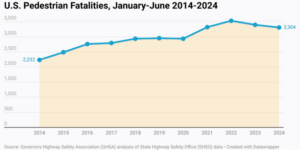A handful of coverage lawsuits have been decided over the application of pollution exclusions to deny coverage for PFAS claims, and rulings have been split on whether carriers owe coverage or a duty to defend their policyholders.
Related article: What Insurers Should Know About PFAS
Law firms writing about the decisions note distinctions between rulings on traditional environmental- and product-liability-type cases, as well as jurisdictional differences related to the “sudden and accidental” exception to pollution exclusions.
Cases include Grange Ins. Co. v. Cycle-Tex Inc. (Dec. 5, 2022); Tonoga Inc. v New Hampshire Ins. Co. (Jan. 6, 2022); Wolverine World Wide Inc. v. Am. Ins. Co. (Oct. 18, 2021); Colony Ins. Co. v. Buckeye Fire Equipment Co. (Oct. 20, 2020).
- In Cycle-Tex, a traditional environmental case in which plaintiffs allege contamination of waterways, a Georgia district court saw “no doubt” that the PFAS chemicals were “pollutants” as defined in the policy, upholding the exclusion in favor of the insurer.
- In Tonaga, a New York State Appellate Court, ruling in a similar traditional environmental matter, came to the same conclusion and also addressed the sudden and accidental exception. “[A]llegations that a solution was dumped over a period of many years suggests ‘the opposite of suddenness,’ and, as a matter of law, volitional, long-term discharge of a substance cannot be viewed as unintended or unexpected,” the court said.
- In contrast, in Wolverine, a federal district court in Michigan held that insurers had a duty to defend “until it is determined that every claim in the lawsuit involving pollution is conclusively determined to be intentionally discharged” in view of the sudden and accidental exception.
- In Buckeye, a North Carolina district court (affirmed at the appellate level) found that an insurer could not deny coverage to a fire equipment company because some of the personal injury and property damage allegedly suffered by underlying plaintiffs “are not the prototypical environmental harms that a pollution exclusion clause is generally intended to protect against.”
Read more about these cases in these articles authored by various law firms:
- “PFAS Regulation and Insurance Coverage Implications,” Feb. 14, 2023, by Malcolm C. Weiss, Scott P. DeVries, Syed S. Ahmad, Yosef Itkin and Javaneh S. Tarter, Hunton Andrews Kurth LLP
- “Georgia Federal Court Holds That Pollution Exclusion Bars Coverage Under Liability Policy For Claims Arising From Discharge Of PFAS Into Waterways,” Dec. 9, 2022, by Paul Briganti, White and Williams
- “Denial of Coverage Under the Pollution Exclusion for Claims Arising out of Exposure to PFAS,” Jan. 6, 2023, by Pamela J. Tillman, Meissner Tierney Fisher and Nichols S.C.
- “A Roadmap to Insurance Coverage for the Mother of Toxic Torts: PFAS,” Sept. 8, 2022, Miller Nash LLP
- “PFAS: From Happy Mistake to Ubiquity to Toxic Liability (But Is There Coverage?),” Feb. 28, 2022, by Michael S. Levine and Rachel E. Hudgins, Hunton Andrews Kurth LLP
- “NY State Appellate Court Holds That Pollution Exclusions Bar Duty to Defend Under Liability Policies for Claims Alleging Exposure to PFAS,” Jan. 7, 2022, by Robert F. Walsh and Paul A. Briganti, White and Williams





















 A Shifting Political Landscape—and More State Regulations for Cyber
A Shifting Political Landscape—and More State Regulations for Cyber  Buyer-Friendly April Reinsurance Renewal Bodes Well for Mid-Year Renewals: Brokers
Buyer-Friendly April Reinsurance Renewal Bodes Well for Mid-Year Renewals: Brokers  HOA Secures $2.5M ‘Wildfire Resilience Insurance’: WTW
HOA Secures $2.5M ‘Wildfire Resilience Insurance’: WTW  The Growth of a New Wave of Distribution Startups in Commercial Auto Insurance
The Growth of a New Wave of Distribution Startups in Commercial Auto Insurance 





